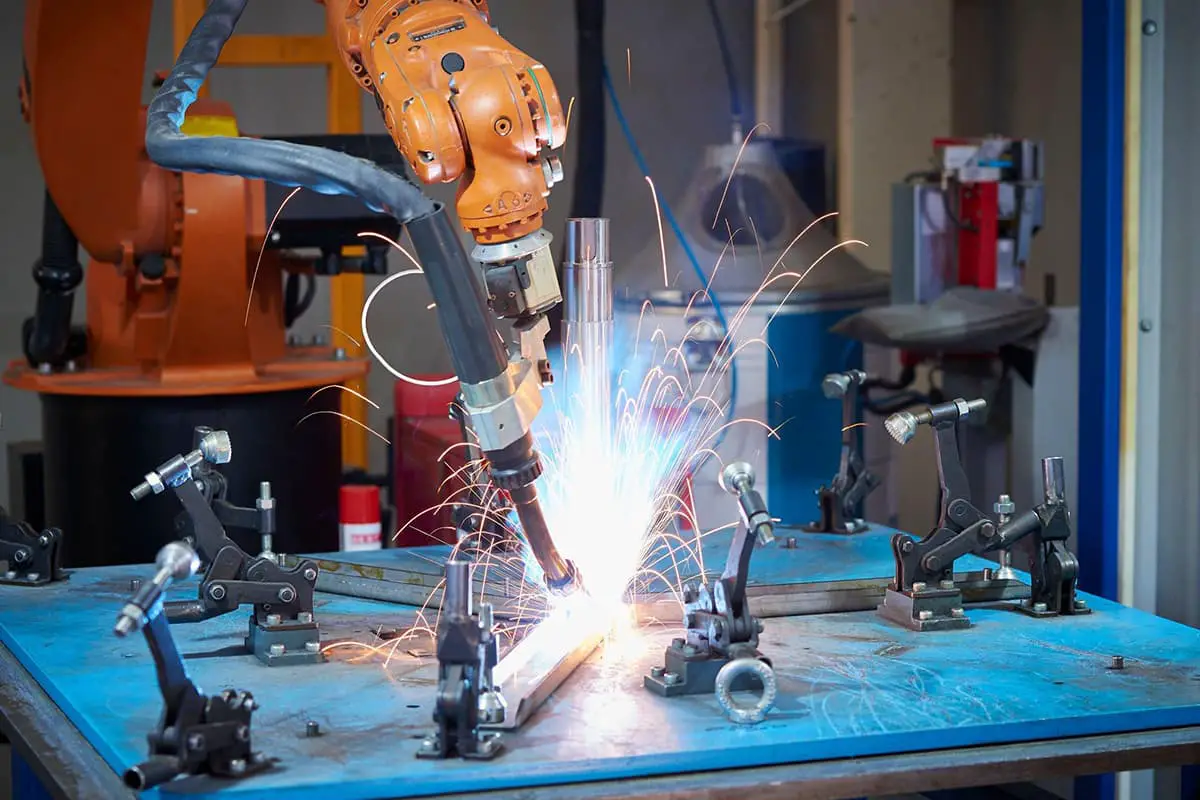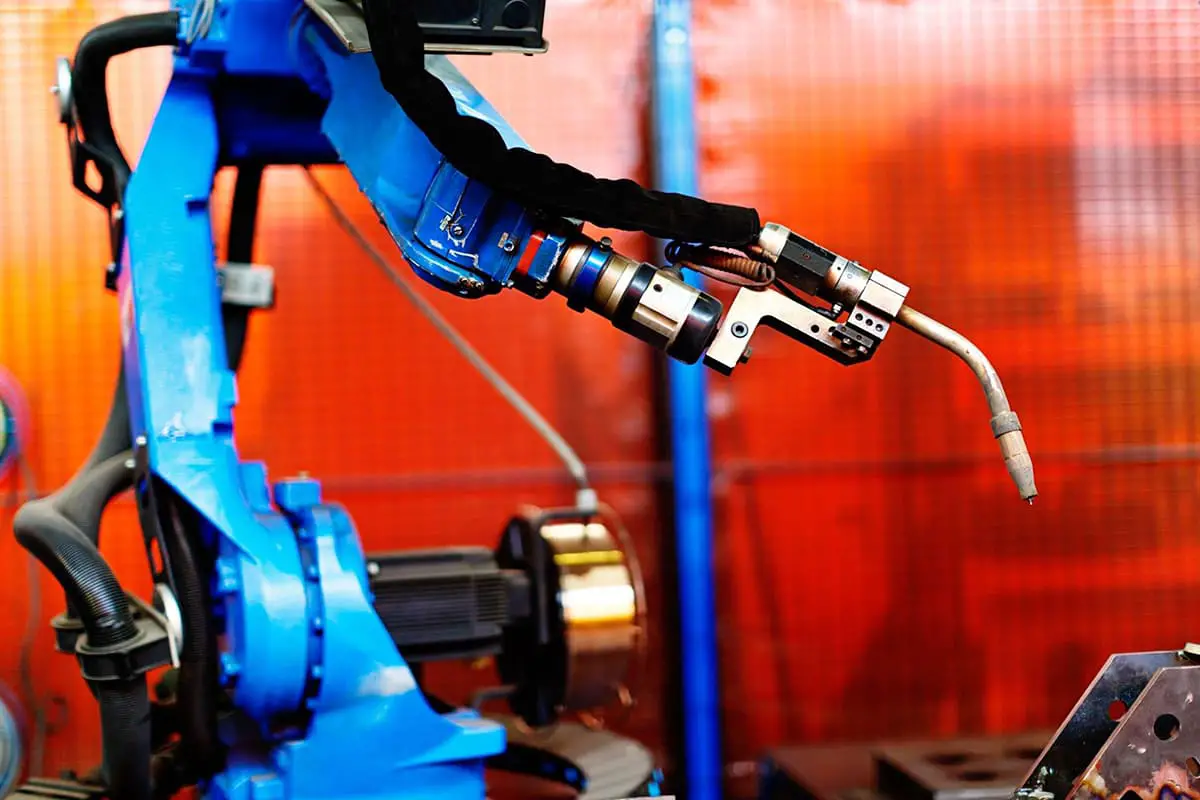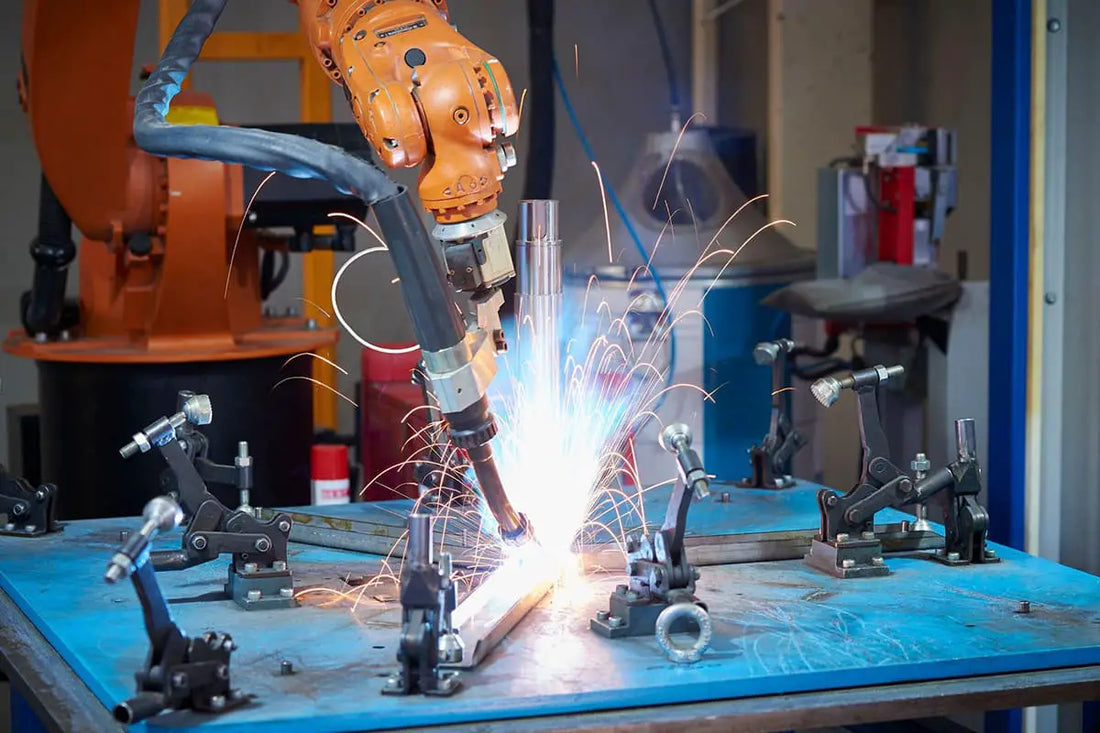When selecting a welding robot from manufacturers or purchasing a smart welding robot, it is crucial to fully and accurately understand its performance specifications. Mastering the main technical specifications of the intelligent welding robot is a prerequisite for operating it correctly when welding parts.
Typically, welding robot manufacturers' product manuals provide very basic technical specifications, and some technical performance indicators need to be deeply understood based on the user's actual situation through business communications and on-site inspections.
The main technical specifications of welding robot manufacturers can be divided into two main categories: general technical indicators for welding robots and specific technical indicators for welding robots.

I. General Technical Indicators for Welding Robots
1. Degrees of Freedom:
This is an important indicator that reflects the flexibility of the welding robot. Generally speaking, three degrees of freedom can reach any point in the welding robot's workspace.
However, welding not only needs to reach a certain position in space, but also ensure the spatial posture of the welding gun or welding tong.
Therefore, arc welding robots and welding cutting robots need at least five degrees of freedom, and spot welding robots need six.
2. Load capacity:
This refers to the rated load that the end of the welding robot can bear, including the welding gun and its cables, cutting tools and gas pipes, welding clamps and cables, cooling water pipes, etc.
Therefore, the load capacity of arc welding robots and welding cutting robots is 6 to 10 kg. If a spot welding robot uses an integrated transformer and integrated welding tongs, its load capacity should be 60-90kg. If using separate welding tongs, its load capacity should be 40-50kg.
3. Welding robots working space:
The working space provided by manufacturers is the maximum achievable space of the welding robot without any end effectors installed, represented graphically. It is important to note that after installing equipment such as a welding gun or welding tongs, the posture of the welding gun needs to be maintained.
The actual welding space will be smaller than that provided by the manufacturer, and it is necessary to carefully calculate with scale drawing or modeling methods to determine whether it meets the manufacturer's actual needs.
4. Maximum operating speed of the welding robot:
This is an important indicator that affects production efficiency in welding production. The welding robot manufacturer's product manual provides the maximum speed that the welding robot can reach at the end of its wrist in the linkage condition of each axis.
Due to the low speed required for welding, the maximum speed only affects the positioning, idle travel and final return time of the welding gun or welding tong.
5. Point-to-point repeat accuracy:
This is one of the most important indicators of welding robot performance. For spot welding robots, from the requirements of the welding process, its accuracy should reach less than 1/2 of the electrode diameter of the welding clamp, that is, +1-2mm; For arc welding robots, it should be less than 1/2 of the welding wire diameter, which is 0.2-0.4mm.
6. Trajectory repeat accuracy:
This indicator is very important for arc welding robots and welding cutting robots, but several robot manufacturers cannot provide this indicator because the measurement process is relatively complex. Typically, several robot manufacturers perform this measurement in-house and must insist on requesting their accuracy data.
For arc welding robots and welding cutting robots, their trajectory repetition accuracy should be less than 1/2 of the diameter of the welding wire or the diameter of the cutting hole of the cutting tool, and generally needs to reach below + 0.3 ~ 0.5mm.
7. User Memory Capacity:
This refers to the capacity of the computer's main memory inside the welding robot controller. It indicates the duration of the teaching program that the welding robot can store, which relates to the complexity of the part that can be processed, or in other words, the maximum number of teaching points.
It is generally expressed by the coefficient that can store robot instructions and the total number of bytes stored. It can also be represented by the maximum number of teaching points.
8. Interpolation function:
For arc welding robots, welding cutting robots and spot welding robots, they must all have linear interpolation and circular interpolation functions.
9. Language conversion function:
Each robot manufacturer has its own proprietary language, but its on-screen display can be in multiple languages. For example, a Yaskawa welding robot can display in Chinese, Japanese, English, German, French and other languages.
10. Self-diagnosis function:
Welding robots must have multiple functions, such as automatic checking of main components, main function modules, fault alarms, fault location display, etc. This is very important to ensure quick repair of welding robots and provide warranty.
Therefore, the self-diagnosis function is an important feature of welding robots and one of the main indicators of product health for welding robot manufacturers.
All four major robot families have 30 to 50 self-diagnosis function items, displaying their diagnosis results and alarms to users through designated codes and indicator lights.
11. Self-protection and security features:
Welding robots have self-protection and safety features. These mainly include protection mechanisms such as automatic shutdown for overheating of the drive system, automatic shutdown for exceeding the action limit and automatic shutdown for excessive rotation, all of which prevent the welding robot from causing injury or damaging auxiliary equipment.
Tactile or proximity sensors are installed in the working parts of the welding robot, allowing it to automatically stop working when necessary.
II. Technical Specifications for Welding Robots

1. Applicable robotic welding or cutting methods:
This is particularly critical for arc welding robots, essentially reflecting the interference-resistant capabilities of the robot's control and drive systems.
Arc welding robots typically employ only gas metal arc welding (GMAW) methods, as these methods do not require high-frequency arc initiation and the robot's control and drive systems lack special interference countermeasures.
Arc welding robots capable of using tungsten inert gas (TIG) welding are recent innovations, equipped with a distinct set of interference countermeasures. For users, this is an important consideration when selecting a robot.
2. Oscillation function:
This is highly important for arc welding robots as it directly affects the performance of the welding process. The extent of oscillation capabilities varies greatly between these robots.
Some offer only a fixed set of oscillation modes, while others allow arbitrary configuration of oscillation modes and parameters within the XY plane. The ideal choice, however, would be robots that allow arbitrary configuration of oscillation modes and parameters within 3D (XYZ) space.
3. Welding process point teaching function:
This is a particularly useful feature during the welding instruction process. It involves first teaching the position of a particular point on the weld seam, followed by adjusting the posture of the welding torch or clamp. During posture adjustment, the original teaching position remains unchanged.
Essentially, the welding robot can automatically compensate for location changes caused by posture adjustments, ensuring the stability of the coordinated point and thus making the operator's life easier.
4. Self-diagnosis and self-treatment of faults in the welding process:
This refers to common faults in the welding process in welding robots, such as arc welding wire sticking, wire breakage, and spot welding electrode sticking.
If these faults occur and are not resolved immediately, they could result in serious accidents, such as damage to the welding robot or dismantling of work pieces.
Therefore, it is essential that welding robots can detect these types of faults and automatically stop and alert in real time.
5. Arc Initiation and Termination Function:
To ensure the quality of robotic welding, parameter changes are necessary. During the welding production process with a welding robot, settings and modifications must be made during the teaching phase. This is also one of the essential functions of an arc welding robot.

























































